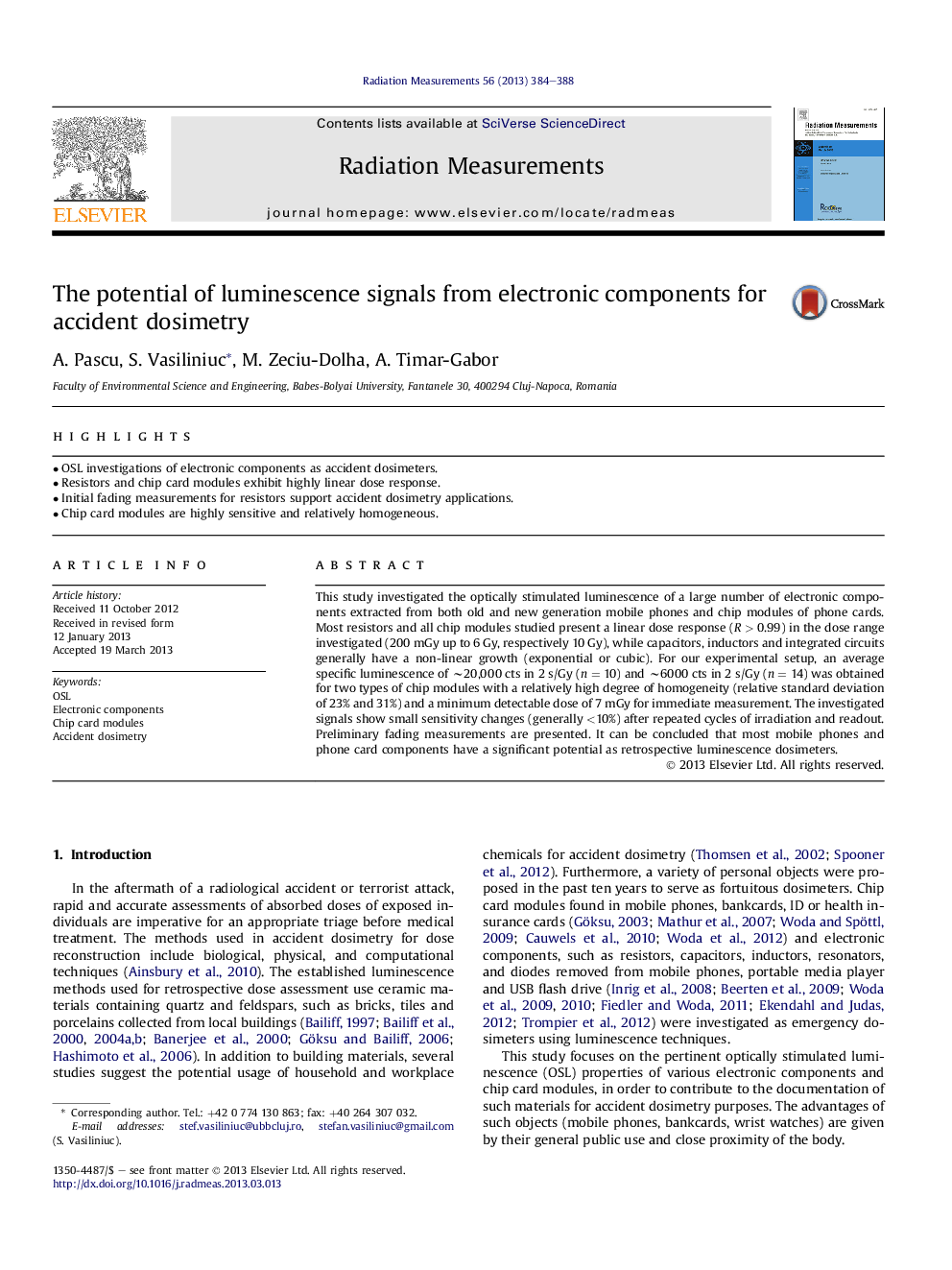| Article ID | Journal | Published Year | Pages | File Type |
|---|---|---|---|---|
| 1888374 | Radiation Measurements | 2013 | 5 Pages |
•OSL investigations of electronic components as accident dosimeters.•Resistors and chip card modules exhibit highly linear dose response.•Initial fading measurements for resistors support accident dosimetry applications.•Chip card modules are highly sensitive and relatively homogeneous.
This study investigated the optically stimulated luminescence of a large number of electronic components extracted from both old and new generation mobile phones and chip modules of phone cards. Most resistors and all chip modules studied present a linear dose response (R > 0.99) in the dose range investigated (200 mGy up to 6 Gy, respectively 10 Gy), while capacitors, inductors and integrated circuits generally have a non-linear growth (exponential or cubic). For our experimental setup, an average specific luminescence of ∼20,000 cts in 2 s/Gy (n = 10) and ∼6000 cts in 2 s/Gy (n = 14) was obtained for two types of chip modules with a relatively high degree of homogeneity (relative standard deviation of 23% and 31%) and a minimum detectable dose of 7 mGy for immediate measurement. The investigated signals show small sensitivity changes (generally <10%) after repeated cycles of irradiation and readout. Preliminary fading measurements are presented. It can be concluded that most mobile phones and phone card components have a significant potential as retrospective luminescence dosimeters.
